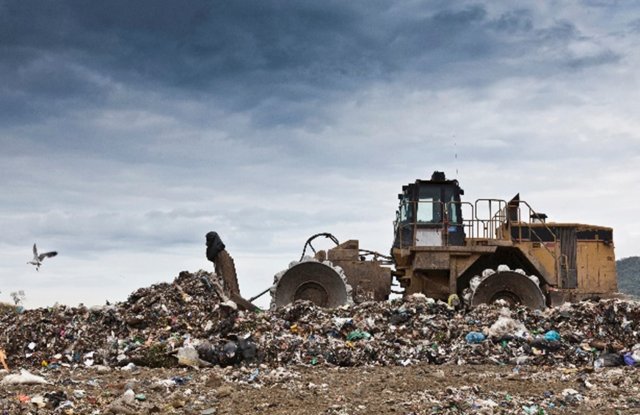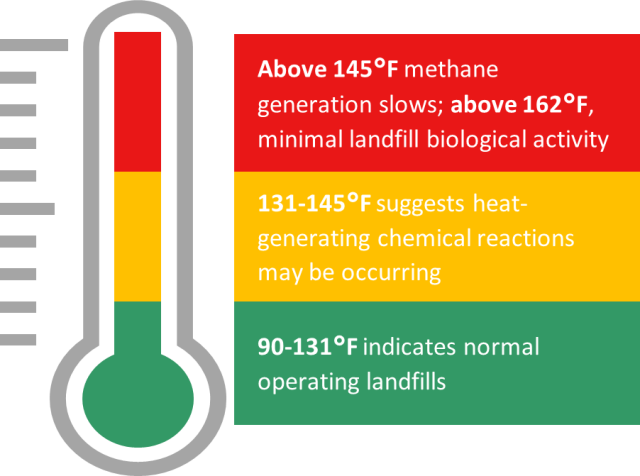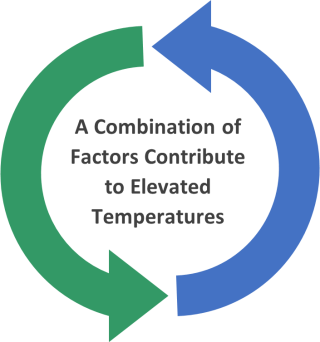Elevated Temperature Landfill

The generation of heat in a municipal solid waste (MSW) landfill is normal as microorganisms break down waste. Elevated temperature landfills (ETLFs) are MSW landfills that exhibit temperatures above regulatory thresholds (131- or 145-degrees Fahrenheit) due to abnormal chemical reactions within the waste mass. These reactions can cause changes in landfill gas composition, noxious odors, rapid and severe waste settlement, leachate seeps and outbreaks, and generate strong leachate, all of which add to operator costs for facility management.
ETLFs are NOT landfills that have experienced a fire. Landfill fires typically occur:
- at or near the surface where oxygen is available,
- usually affect only a small area, and
- can be quickly managed.
View and download the full EPA report on this research: "When Does a Municipal Solid Waste Landfill become an Elevated Temperature Landfill (ETLF)?"
Common Indicators of an Elevated Temperature Landfill
- Elevated gas temperature (greater than 131 degrees Fahrenheit)
- Decreased methane (less than 40 percent) along with increased concentration of carbon dioxide (greater than 50 percent)
- Increased carbon monoxide, hydrogen, and ammonia gases

Factors Contributing to Elevated Temperature Landfills
ETLFs likely result from a combination of reactive waste streams and landfill management practices. One common observation at ETLFs is that the affected area is wet, which suggests poor drainage through waste. Moisture management is always an important consideration for landfill designers and operators.

Accepted Waste Streams
Examples of waste streams that are known or suspected of causing ELTFs:
- Ashes and dusts (e.g., waste-to-energy ash, baghouse dust)
- Aluminum, iron, and steel production by-products and wastes (e.g., dross, slag)
Management Practices
Internal moisture content can be affected by:
- Solidification, liquids addition, or leachate recirculation
- Type and hydraulic properties of cover or alternative cover materials
- Management of special wastes (i.e., co-disposal or waste segregation)
- Removal of liquids from gas extraction wells
Management and Mitigation Strategies
If you suspect an ETLF, determine the information that needs to be gathered to develop an appropriate management and mitigation strategy.
Heat and Odor Management Strategies
- Apply geomembrane cover
- Add additional gas extraction wells
- Excavate gaps in waste mass
- Install and operate closed-loop heat exchanger
